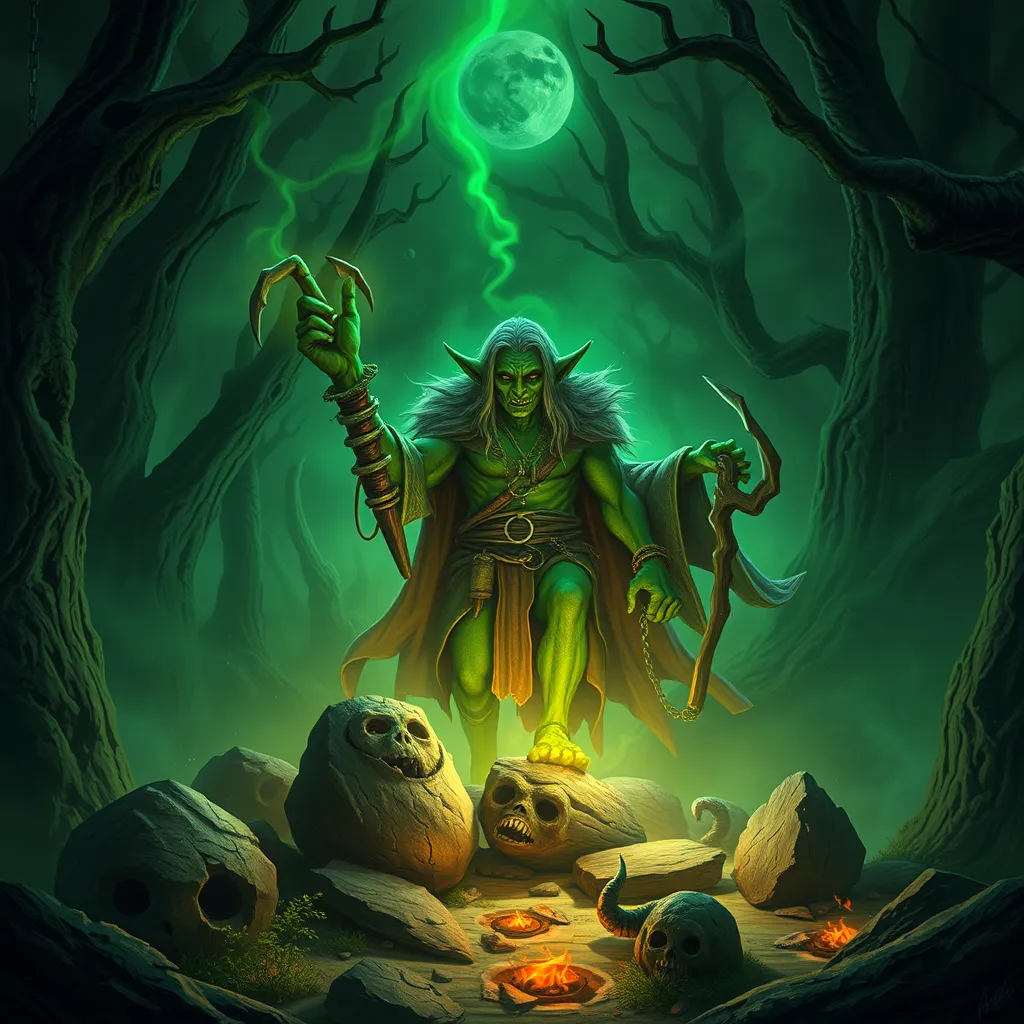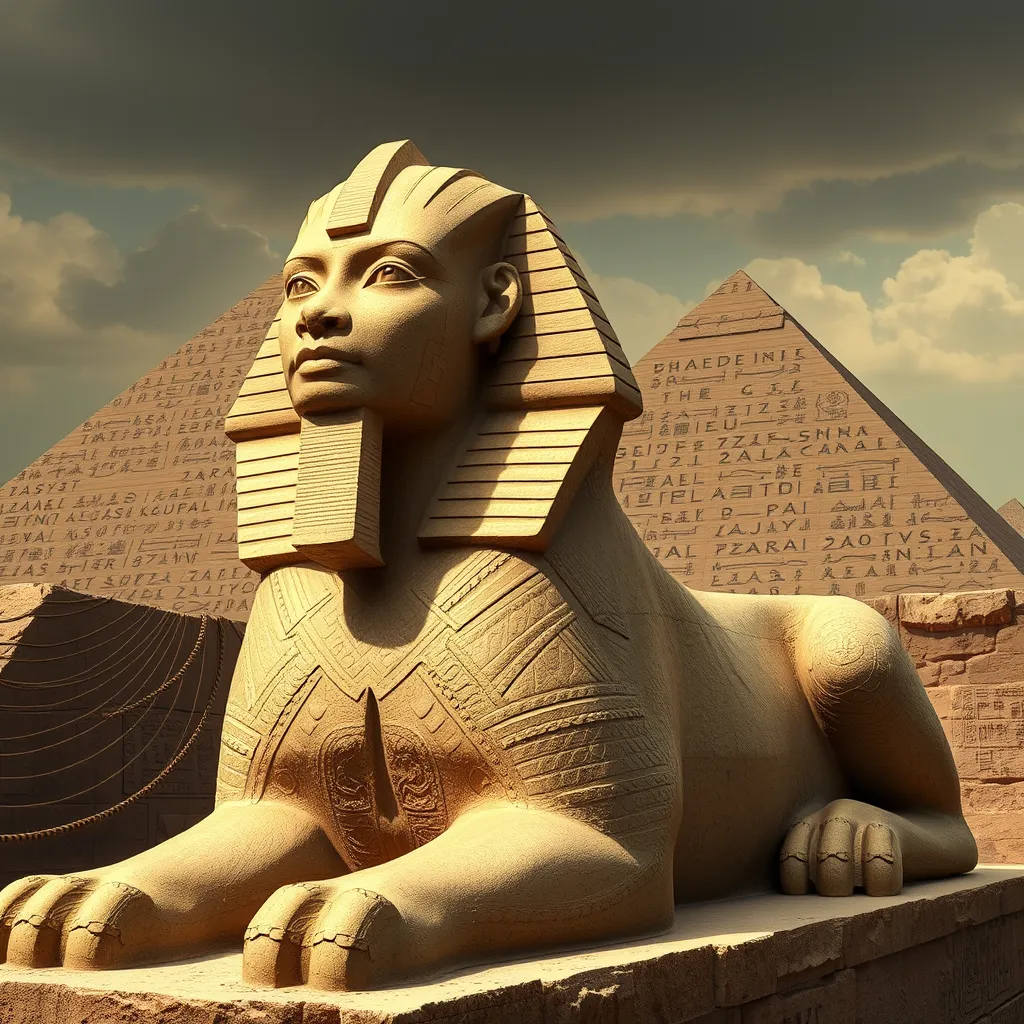The Green Men: Delving into the World of Goblin Legends
I. Introduction to Goblin Legends
Goblins have long been a part of folklore, recognized as mischievous creatures that inhabit the shadowy corners of stories and legends. These beings often possess a variety of traits that can range from malevolent to benevolent, depending on the tale. In particular, the Green Men represent a fascinating subset of goblin mythology, characterized by their connection to nature and greenery.
This article aims to explore the rich tapestry of goblin legends, focusing on the Green Men, their historical origins, characteristics, representations in art and literature, and their influence in contemporary society. Understanding goblin legends, especially the Green Men, provides insight into cultural beliefs and the human psyche.
II. Historical Origins of Goblin Mythology
The origins of goblin mythology can be traced back to ancient texts and oral traditions. Early references can be found in various cultures, showcasing a diversity of interpretations. For instance:
- In European folklore, goblins were often depicted as malevolent spirits or mischievous fae.
- In ancient texts, such as the works of Pliny the Elder, various creatures resembling goblins were described.
As the concept of goblins evolved, different cultures infused their beliefs and characteristics into these figures. The Green Men, in particular, emerged prominently in early European folklore, often representing the spirit of nature and the cycle of life and death.
III. Characteristics of the Green Men
The Green Men are often depicted with distinctive physical attributes and symbolism that set them apart from other goblin types. Common characteristics include:
- Physical Attributes: Typically portrayed as a human face surrounded by leaves, vines, and branches, they symbolize the connection between humanity and nature.
- Symbolism: The Green Men represent fertility, rebirth, and the natural world, often embodying the life force that sustains the earth.
- Differences from Other Goblin Types: Unlike many other goblins who are often depicted as malicious or tricky, the Green Men are usually seen as guardians of nature and fertility.
IV. The Green Men in Art and Literature
The Green Men have been represented in various forms of art and literature throughout history. In medieval art, they were commonly depicted in church carvings and architecture, symbolizing the connection between spirituality and the natural world. Some notable examples include:
- Gargoyles and decorative motifs in cathedrals, often incorporating foliage.
- Illustrations in manuscripts showcasing their connection to the earth.
In modern literature and popular culture, the Green Men continue to inspire authors and artists. Works such as:
- The Green Man by British author J.R.R. Tolkien, which explores themes of nature and mythology.
- Films and fantasy series that incorporate the Green Man as a symbol of nature’s resilience.
These representations highlight the enduring nature of the Green Men, allowing them to maintain relevance in contemporary storytelling.
V. Regional Variations of Goblin Legends
Goblin legends, including those of the Green Men, vary significantly across regions. In Europe, for instance:
- In England, the Green Man is often associated with spring and rebirth, celebrated through festivals.
- In France, similar figures represent the forest’s spirit, embodying local customs and beliefs regarding nature.
These regional variations reflect local customs and beliefs, showcasing both similarities and differences with goblin legends in other cultures. In contrast, other cultures, such as those in Asia and Africa, depict goblins with different characteristics, often focusing on trickery and mischief rather than a connection to nature.
VI. The Green Men in Contemporary Society
In modern times, the Green Men have found new interpretations and adaptations, often aligning with contemporary themes such as environmentalism. Their portrayal emphasizes the importance of nature and ecological preservation. Some key points include:
- Modern Interpretations: Artists and environmental groups often use the image of the Green Man to promote awareness of environmental issues.
- Role in Environmental Movements: The Green Men symbolize the fight for nature’s protection, serving as a reminder of humanity’s responsibility towards the earth.
- Cultural Significance in Festivals: Various festivals celebrate the Green Man, emphasizing themes of renewal and the changing seasons.
VII. Debunking Myths and Misconceptions
Despite their rich history, numerous myths surround goblins and the Green Men. Some common misconceptions include:
- The belief that all goblins are malevolent; many, like the Green Men, are protective figures.
- Confusing goblins with other mythical beings such as elves or fairies; while there are overlaps, each has distinct characteristics.
The portrayal of goblins in media has significantly influenced public perception, often skewing the understanding of their true nature and significance in folklore.
VIII. Conclusion: The Enduring Legacy of the Green Men
In summarizing the exploration of goblin legends, particularly focusing on the Green Men, we find a rich narrative that spans cultures and centuries. The Green Men symbolize not only the spirit of nature but also the complex relationship between humanity and the environment.
This legacy remains relevant today as we face ecological challenges and seek to reconnect with the natural world. As we delve deeper into folklore, we uncover the wealth of stories that enrich our understanding of both the past and present.
We encourage further exploration of these legends, as they hold valuable lessons and insights that resonate across time and culture, reminding us of the importance of nature and the interconnectedness of all living things.



